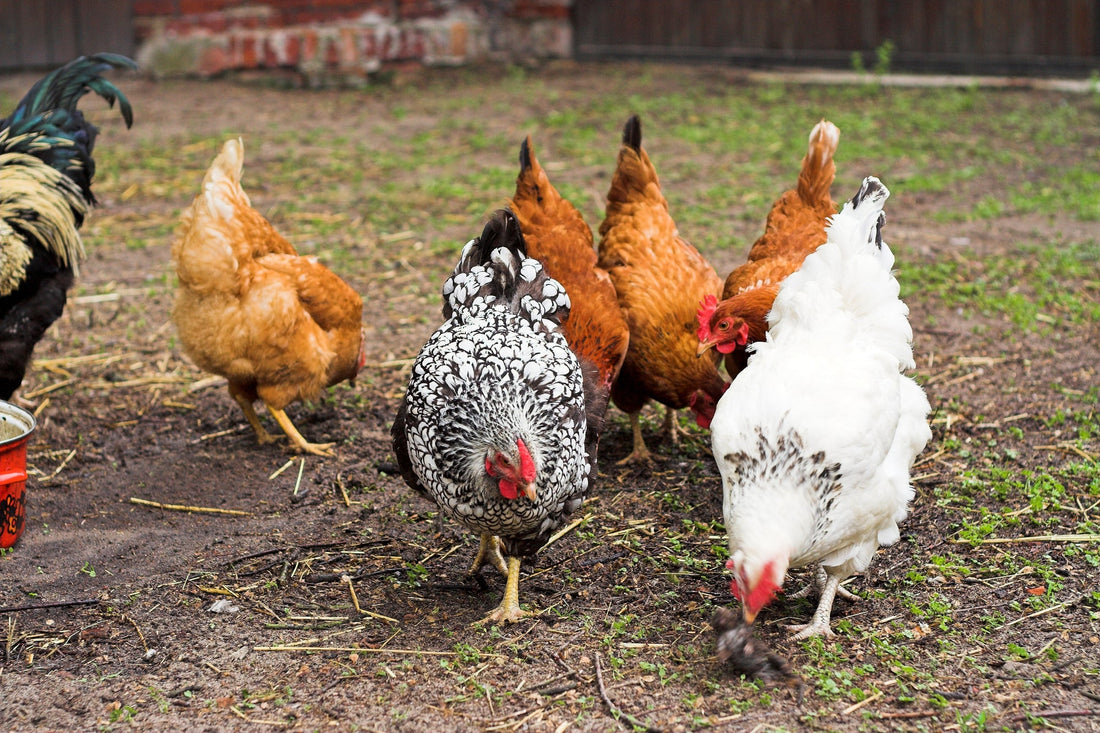Let's face it - bringing new chickens into your current flock can be a daunting task. It's like throwing a party where you invite all your friends and then randomly introduce a few strangers. Will they hit it off, or will your little backyard utopia turn into a feathery war zone?
Well, fear not, my fellow chicken enthusiasts! I'm here to guide you through the process of integrating new chickens into your current flock, all while maintaining a mildly humorous tone that even Neil Patel would appreciate. In this ultimate guide, we'll cover everything you need to know, from selecting the perfect new additions to getting everyone to play nice.
So, buckle up, grab your favorite poultry-themed beverage (I'm partial to a nice cold glass of clucktail myself), and let's dive in!
Section 1: Picking Your New Flock Members Like a Pro
Start with the right breed
Choosing the right breed is like picking a college roommate; you want to find someone compatible to share your living space with. The same goes for your chickens. Some breeds are more sociable and docile, while others are, well, not so much.
Do some research on the temperament of different breeds to find the perfect match for your flock. If you're running a backyard UN of chicken breeds, make sure your new additions are peacemakers, not troublemakers.
Age matters (sorry, no cougars allowed)
Integrating new chickens of a similar age to your existing flock is generally a smoother process. Chicks and pullets are less intimidating to the established birds, but they also need some extra TLC, so weigh your options carefully.
Adult birds can be a bit trickier. If you're adding adults, opt for younger hens or roosters, as they're more adaptable and less likely to cause a stir in your coop.
Section 2: Preparing for the Arrival of Your New Feathered Friends
Quarantine: Because nobody wants a sick chicken
Before introducing your new chickens to your flock, it's important to quarantine them for at least two weeks. This helps ensure they're healthy and not carrying any diseases or parasites that could potentially wipe out your entire chicken empire.
Set up a separate space, like a dog crate or a small coop, at least 10 feet away from your main flock. This will give your new birds a chance to acclimate to their new surroundings while keeping everyone safe.
Upgrade your coop (if necessary)
When adding new chickens, you may need to make some upgrades to your current coop. Each bird should have a minimum of 4 square feet of space inside the coop and 10 square feet in the outdoor run.
Remember, a roomier coop is a happier coop. So, while you may be tempted to cram in as many chickens as possible (I mean, who doesn't want more fresh eggs?), overcrowding is a surefire way to cause problems.
Section 3: The Integration Process - A Step-by-Step Guide to Flock Harmony
1 The "look but don't touch" phase
Once your new birds have passed quarantine, it's time for a little meet and greet. Start by placing the newcomers in a separate, enclosed area within sight of your existing flock. This allows them to observe each other and get used to their presence without any physical contact.
This is like the awkward phase when you first meet someone new and pretend not to stare at them from across the room. It's all about getting familiar and comfortable before you dive into a full-blown conversation (or in this case, a full-on flock integration). Give them a few days to check each other out and settle down.
2 Mingling at the pecking order party
Now that your chickens have had a chance to scope each other out, it's time to let them mingle. Choose a neutral area, like a large outdoor run, to let the birds interact for the first time. Make sure to provide plenty of food, water, and distractions (such as perches, dust baths, and treat-dispensing toys) to keep everyone occupied and reduce the likelihood of squabbles.
Keep a watchful eye on the chickens during these initial interactions. There will likely be some pecking and chasing as they establish the new pecking order, but this is normal. Just be ready to intervene if things get too aggressive.
3 Coop sleepover: The final frontier
Once your chickens have spent some time together in the neutral area without too much drama, it's time for the ultimate test: the coop sleepover.
At dusk, when your birds are getting ready to roost, quietly move the new chickens into the main coop. Chickens are creatures of habit, and they're much less likely to cause a fuss when they're sleepy and ready for bed
Check on the chickens first thing in the morning to ensure everyone has settled in nicely. If you spot any issues, you may need to repeat steps 1 and 2 for a little longer.
Section 4: Tips for a Smooth Integration
Timing is everything
Introduce new chickens when your current flock is busy foraging, laying, or roosting. This helps minimize disruptions and reduces the chances of aggressive behavior.
Keep an eye on the roosters
Roosters can be a little territorial when new birds are introduced, so keep an extra close eye on them during the integration process. If your rooster seems overly aggressive, you may need to separate him from the flock temporarily.
Practice patience
Integrating new chickens can take anywhere from a few days to a few weeks, so be patient. Your flock's happiness and well-being are worth the effort.
By following these tips and tricks, you'll be well on your way to creating one big, happy, clucking family in your backyard. And who knows, maybe your chickens will even start laying golden eggs. But hey, one can dream, right?
Now go forth and conquer the world of chicken integration, my fellow poultry aficionados. And remember, keep calm and cluck on!

